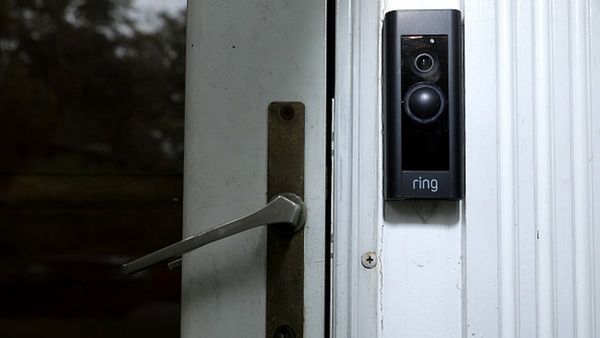It's 1968 and Hong Kong flu is spreading like wildfire across Sydney when six-year-old John Gerrard's eldest brother Stephen dies at home without seeing a doctor.
Stephen, 11, had caught the virus on a school excursion, the family doctor was sick himself, and the hospital system was overwhelmed.
No vaccine was available.
On Monday, Dr Gerrard will step into the role of Queensland's chief health officer on a crucial day in the coronavirus pandemic as the state reopens its borders to fully vaccinated travellers from interstate hotspots.
Stephen was his "very good friend", a boy with a similar personality to his own, his "partner in crime" alongside middle brother, Peter – and the reason he became a doctor.
His voice cracking with emotion in an interview with the ABC yesterday, Dr Gerrard vowed to use his brother's memory to help him protect Queenslanders during the next phase of the pandemic.
"Now that I have this job, I'm determined that that will not happen in Queensland.
"The most vital thing that people can do to prevent the harm done by a surge of infectious disease is to get vaccinated now."
From COVID 'spot fires' to an incoming surge
Dr Gerrard, previously director of infectious diseases at the Gold Coast University Hospital, said Queensland was planning for an expected surge in COVID-19 cases "in the coming weeks and months".
"We're going to be seeing spot fires," he said.
"We're already seeing that. We've had spot fires in both Brisbane and in the Gold Coast and they're going to continue.
"I think it will be spot fires which gradually coalesce into some form of surge. The problem is, it's hard to work out how big or extensive this surge is going to be because there is nowhere exactly the same as Queensland that we can compare ourselves with.
"What we're doing is preparing for the worst but hoping for the best. I'm very confident we're doing the right thing in Queensland, that our plans are the right thing for Queensland and that thousands of lives are going to be saved as a result."
Dr Gerrard said while hospitals were prepared for COVID-19 patients, and detailed plans were in place for an expansion of intensive care units, many of those infected would be managed at home.
"Those processes are being finalised. We need to be able to do that safely. That's quite intricate and complex but it's very necessary because we don't want everybody to come to hospital with COVID-19," he said.
Decades spent preparing for contagion
Dr Gerrard has spent more than three decades of his life planning and training for a huge global pandemic, admitting he sometimes wondered whether fears of a contagion to rival the 1918 Spanish flu, which killed millions, were nothing more than science fiction.
He helped design the Gold Coast University Hospital, which opened in 2013, specifically to deal with an outbreak of an airborne infectious disease.
"Between 2013 and 2020, I often said to my colleagues, 'Gosh, did we get a bit carried away here? Have we just imagined this in our heads? Have we wasted all this money designing this specific isolation ward to deal with what ultimately might be a science fiction?'
"Thankfully, we were vindicated."
Dr Gerrard treated the first COVID-19 patient in Queensland, a 44-year-old Wuhan man from China in late January 2020 – before the mystery coronavirus that had started sweeping the world had even been named.
In February last year, before the World Health Organization had declared the pandemic, he was also part of an international mission to help the Japanese deal with an outbreak of the virus on the Diamond Princess cruise ship.
With 30 people in intensive care and on ventilators when he arrived, the infectious disease physician remembers thinking: "This is worse than I had thought it was going to be."
From Ebola to AIDS
Dr Gerrard has become a prominent Australian figure in infectious disease research and treatment.
In 2014, he was part of an Australian team that set up a treatment centre in Freetown, Sierra Leone, in West Africa, during an Ebola outbreak.
And as a junior doctor working at the Royal Prince Alfred in Sydney in the 1990s, he rewrote the history of acquired immune deficiency syndrome (AIDS) in Australia, identifying the nation's first known person with AIDS, 12 years after the patient died of a "mystery" pneumonia.
"I was studying a disease called pneumocystis pneumonia … an infection that occurs in people whose immunity is impaired. It's very well known to occur in patients with AIDS," he said.
"We were studying pneumocystis in patients with organ transplants, and I was going through all the old records … looking for who got pneumocystis pneumonia before AIDS was on the scene.
"I got up [to] this one man who died of pneumocystis pneumonia in 1981, which was the same time that AIDS was being reported in Los Angeles and New York."
The unnamed 72-year-old man lived on his own in central Sydney and had never travelled overseas.
A cause for his death from pneumocystis pneumonia remained a mystery until 1993 when tests on one of the man's stored lymph glands was positive for HIV – human immune deficiency virus.
Dr Gerrard's discovery proved HIV was in Australia from at least February 1981.
That's well before the country's first official recorded case, an American tourist who reported to St Vincent's Hospital, Sydney, in December 1982 with a bad cough and other infections, later testing positive to HIV.
A COVID-normal life for the vaccinated
As Dr Gerrard prepares to step into Jeannette Young's shoes as Queensland's next chief health officer, he reveals their paths go back to the University of Sydney medical school.
They later both moved to the Sunshine State as young doctors in the 1990s.
Dr Young, who became Queensland's 27th Governor in November, offered her replacement some advice when they met up last week to discuss the role she held for 16 years.
"The major decisions are on me, on my role. Having said that, there is a very big team.
"In addition to having three deputies, we have epidemiologists, we have virologists, public health specialists, obviously infectious diseases specialists, intensivists, emergency department specialists.
"Even though ultimately, decisions are done in the name of the chief health officer, that is done with the advice of a very big team."
While Dr Gerrard expects health care workers will have to treat COVID-19 patients for years, he predicts that for the average Queenslander life will begin to return to "more or less" normality within months – if they're vaccinated.
But he said the post-COVID-19 normal would include masks, isolation, quarantine and potentially other public health measures for some time to come.
Dr Gerrard will turn 60 on Monday – the day he starts as Queensland's new chief health officer.
No celebrations are planned. His only wish is for some sleep as he prepares for the big job ahead.







